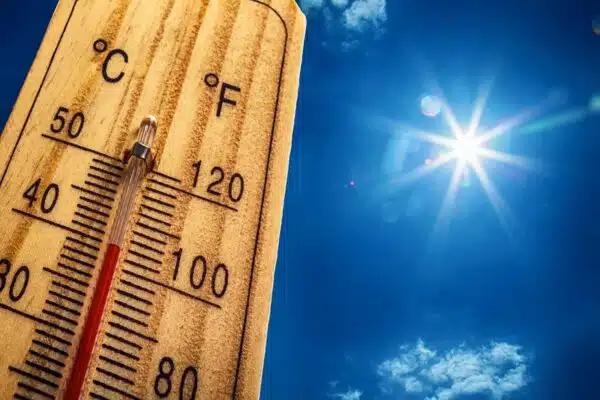As warmer months thankfully fast approach, it is time again to remind everyone of the importance of proper fluid and food intake. It is essential to understand your tolerance. Furthermore, we should reference the below-listed guidelines and symptoms of overheating:

- Avoid eating large meals immediately before working in a hot environment.
- To prevent dehydration, drink as much liquid as you lose, whether you are thirsty or not. We should consume at least eight 8-ounce glasses of water per day.
- Symptoms of heat cramping include muscle spasms of the abdomen and other voluntary muscles.
- Heat Cramps usually occur after prolonged heat exposure and periods of very heavy sweating, when our bodies lose too much salt and other minerals through profuse sweating.
- In extreme conditions, drinking water alone will not keep the salt and other mineral supply replenished enough to prevent heat cramps.
- If you experience prolonged heat exposure and profuse sweating, drinking sports drinks such as sports drinks containing sodium chloride can help prevent heat cramps and replenish your body.
- Symptoms of heat exhaustion include profuse sweating, rapid breathing, and blurred vision.
- A victim’s skin may be moist/cool to the touch with a weak pulse. If these symptoms are present, get the individual to a cool location and give small amounts of water. If the individual loses the ability to make sound judgments, starts vomiting, or loses consciousness, get medical attention.
- Symptoms of heat stroke include hot, dry skin which may be red or spotted.
- A victim’s body doesn’t sweat because their cooling systems shut down as their internal body temperatures reach dangerous levels (around 105 degrees F).
- Heat stroke victims may be delirious or go into convulsions as their body temperatures shoot out of control.
- Heat stroke can cause death and lead to brain damage if not treated immediately. Have someone call for emergency medical help. Douse the victim with a steady flow of cool water until medical help arrives.
- Pacing oneself during upset conditions is extremely important. If you are unaccustomed to working or exercising in a hot environment, start slowly and pick up the pace gradually. If exertion in the heat makes your heart pound and leaves you gasping for breath, STOP all activity, get into a cool area, or at least in the shade, and rest, especially if you become lightheaded, confused, weak, or faint.
- It is better to eat smaller meals more frequently. Avoid caffeine and alcohol as they are diuretics and can cause your body to lose water.
- While working in hot environments, you can lose as much as a quart of water per hour.
Following these simple steps and understanding symptoms will help lead to a more enjoyable and warmer season.
Be safe!





